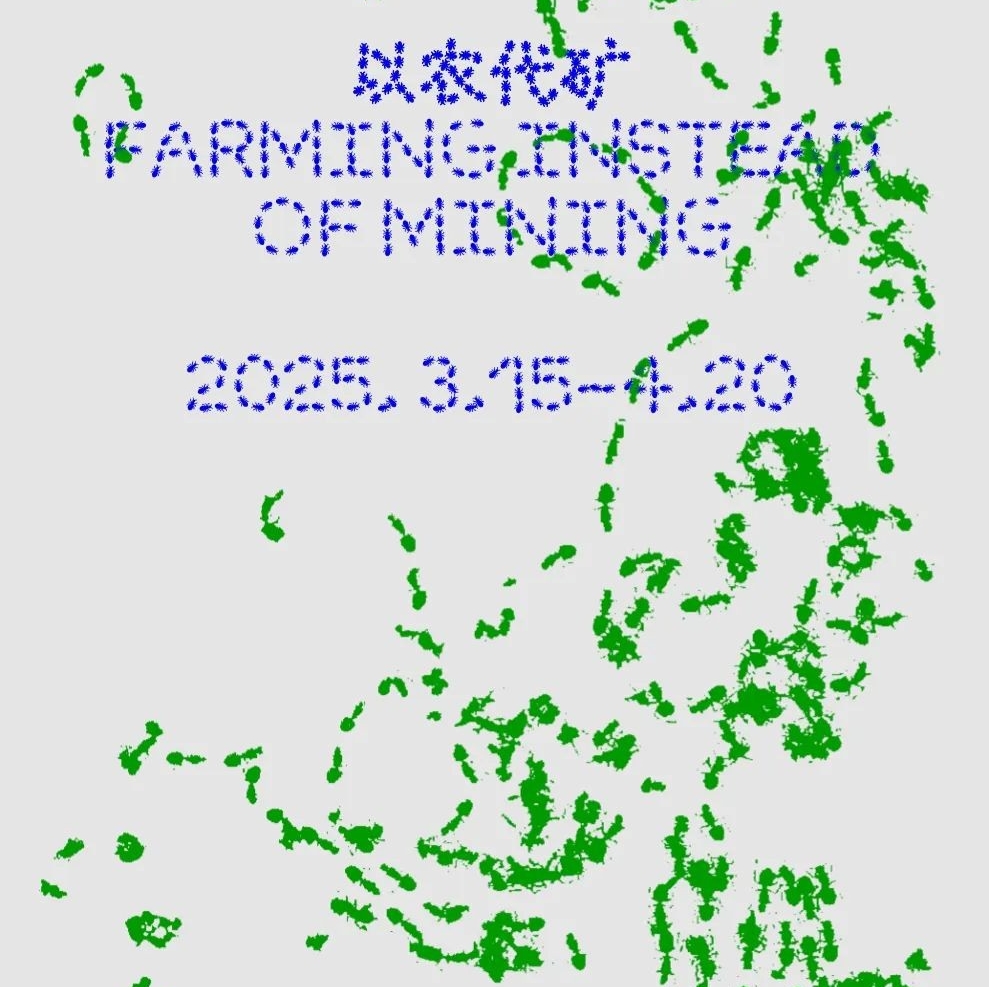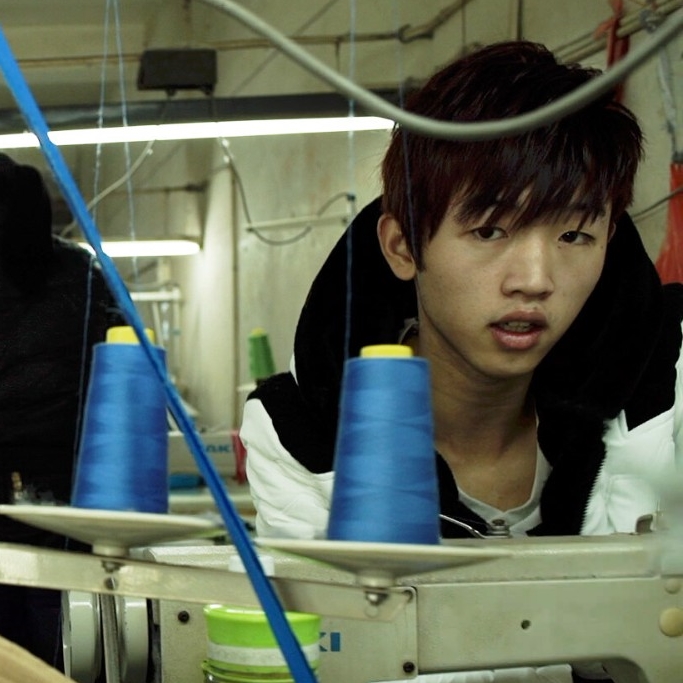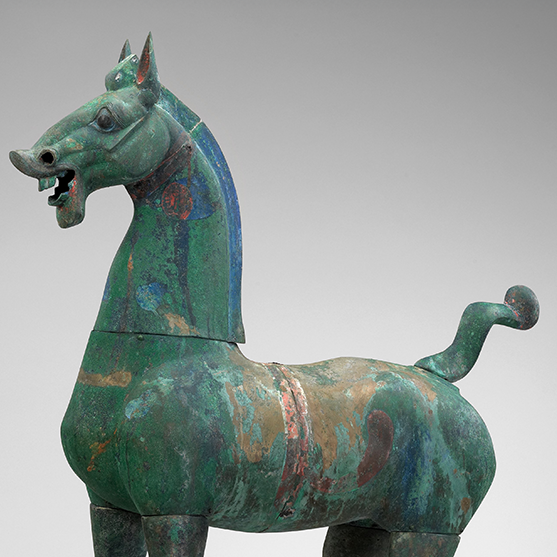 Exhibition View of Three-Time State: Xu Lei's Solo Exhibition
Exhibition View of Three-Time State: Xu Lei's Solo Exhibition
“So we beat on, boats against the current, borne back ceaselessly into the past.”
Francis Scott Key Fitzgerald, in The Great Gatsby
Away from the hustle and bustle of downtown, Xu Lei’s latest solo exhibition, Three-State Time, is presented on the shores of Yinshan Lake in Suzhou. As the saying goes, “Every thirty years, a generation is past and the way of things changes.” This solo exhibition consciously leaps over the artist’s youth and hesitance at the beginning of his artistic experiments in the 1980s, and focuses on his most representative creations in the thirty years between 1993 and 2023, extracting the most mature elements of his artistic achievements.
For a long time, Xu has been regarded by critics as a leading figure in “contemporary ink and wash painting” for his artistic exploration in the past and the present, in the East and West, which defies simple categorisation. Xu agrees that it is hard for him to find peers, joking that he is unlike anyone else. His art does not follow the times, thus it is impossible for him to be included in any existing “circles”.
With a strongly reflective tone, Xu recalls the period of radical artists in the mid-1980s, “What excited us was just the opposite of the official ideology. I seemed to feel that the so-called ‘avant-garde’ and ‘backfield’ in art were completely self-deceptive, and that the so-called freedom was not a slogan, but should be a tacit assertion.” [1]
 Exhibition View of Three-Time State: Xu Lei's Solo Exhibition
Exhibition View of Three-Time State: Xu Lei's Solo Exhibition Xu Lei, Falling Moon, Dimension variable, installation, metal, 2023
Xu Lei, Falling Moon, Dimension variable, installation, metal, 2023
Since the 1990s, Xu has been “turning from red to blue”, gradually internalising his artistic experiments, abandoning his radical veneer while reorienting himself towards Chinese tradition with a certain “escape” mentality. He seeks a creative possibility where, “under the premise of restraint and on the baseline of aesthetics, he has the maximum priority and does not have to curry favour with any power or offer favour to any power”.[2] In this way, he is probably one of the first creators to reflect consciously on the “'85 New Wave”.
 Exhibition View of Three-Time State: Xu Lei's Solo Exhibition
Exhibition View of Three-Time State: Xu Lei's Solo Exhibition
Faring well to the '85 New Wave art movement and entering the 1990s, Xu gradually smoothed out his position in relation to tradition and Western art, and in turn discovered the creative theme of “time”. Time is a traditional theme in Chinese painting, and it is an intrinsic property regarding shape and form such as the long scroll. In the hands of contemporary artists, time can also become a Möbius ring that freezes and distorts time, tweaking the classical dream of a trance while employing “allusion” as in poetry writing. The poet Zhang Zao, who was also good at using allusions and who also denied that to be contemporary was to “draw a line” from tradition, took almost the same path as Xu between tradition and contemporaneity. He picked up imagery from classical poetry and allowed “the plum blossoms fall all over the southern hills”, all of a sudden stopping time in the flamboyant and beautiful space of imagination. The contemporary latitude of time therefore covers the unattainable “allusion”.
 Exhibition View of Three-Time State: Xu Lei's Solo Exhibition
Exhibition View of Three-Time State: Xu Lei's Solo Exhibition
Without recognising the stark opposition between “avant-garde” and “tradition”, Xu uses the language of brushwork to return to tradition and mine the “ideas” that have been overlooked or hidden in traditional art. What the comrades in the modern art movement see as a “regression” back to tradition is Xu’s “regressive advance”, moving forward until he returns to the old days.
 Exhibition View of Three-Time State: Xu Lei's Solo Exhibition
Exhibition View of Three-Time State: Xu Lei's Solo Exhibition
Perhaps the first question he faced on his journey was, what was the “tradition” he chose? And how could he “overhaul and clarify” the tradition? Of the “Old Court” series which began in the early 1990s, the theme was “to win back the nobility of the Chinese people”. Works such as “Secluded” (1994), “The Illusory Stone” (1996) and “Deer in Hat” (1998) were inspired by the imagery obtained from old photographs of the royal court. He picked up the imagery as in the symbolist poetry he loves, provoked rhetoric, and his fascination with cinema, transformed into scenarios appearing in the paintings. The rhetorical game was not only a juggling montage in film editing, but also a game referred to in psychology. The influence of René Magritte on Xu was not about the rhetoric, but the inspiration for Xu to love the game of labyrinth where he created and moved the noumenal and referential. The hat was not that of Magritte; it suggested the classical vulnerability and grace, “so courteous as a jade pendant” (from Zhang Zao’s poem).
 Xu Lei, Secluded, 63×51cm, Ink and color on paper, 1994.
Xu Lei, Secluded, 63×51cm, Ink and color on paper, 1994. Exhibition View of Three-Time State: Xu Lei's Solo Exhibition
Exhibition View of Three-Time State: Xu Lei's Solo Exhibition
Later, Xu’s signature blue was seen more and more frequently in works including “Shadow of An Eidolon” (2001), “Mr. Butterfly” (2002), “Chronicle of Butterflies” (2002) and “Astray” (2004). This announced that the artist would further depart from tradition, using a realistic approach and colour system that had long been considered “out of character” by the Chinese painting traditions. The inspiration of René Magritte, Yves Klein and Marcel Duchamp, across time, resided in Xu’s references to a wide range of traditional art, especially the “45-degree angle” iconography found in late Ming (a Chinese dynasty in 1368-1644) woodcut prints. As Xu discovered, that angle was the constant and timeless viewing angel in Chinese imagery from those painted in the second century AD in the ancestral hall of Zhu Wei located in Dongjin County, Shandong, through to those in the “Admonitions of the Instructress to the Court Ladies” by Gu Kaizhi in the fourth century, and in “The Night Revels of Han Xizai” in the tenth century. [3]Based on this, classical Chinese painting has developed its own progressive and musical “rhythm” in the structure created by the curve and the straight lines. The “45-degree angle” became an aesthetic principle discovered by the artist diving deep into Chinese aesthetics. Imagine, how many other classical Chinese perspectives and worldviews yet to be discovered are waiting for a new round of modern interpretation?
 Xu Lei, Empty Pool, 65×86cm, Ink and color on paper, 2000.
Xu Lei, Empty Pool, 65×86cm, Ink and color on paper, 2000.
From 2005 to 2010, Xu took increasing intellectual pleasure in teasing the relations among images regarding the way of thinking and rhetoric. Passionate about literature and sensitive to rhetoric, Xu discovered in traditional aesthetics and literature the conceptual significance of the rhetorical device of “counterpoint” in classical literature.
 Xu Lei, Dream of Thousand Mountains at Noon, 154×270cm, Ink and color on silk, 2015.
Xu Lei, Dream of Thousand Mountains at Noon, 154×270cm, Ink and color on silk, 2015.
In the Chinese aesthetic system, “counterpoint” stemming from the “golden mean or the doctrine of the mean” at the heart of Confucian philosophy is ubiquitous. A self-proclaimed “moderate”, Xu actually saw in the tradition an ability that the world needed the most. He employed “counterpoint” in the chess game between the cultural allegories of East and West as in “Playing Chess” (2007), in the game of life and death as in “Uncertainties” (2009), in the division with the fossil standing in the middle of the Ming Dynasty’s world map as in “The End of the World” (2009), in the couplet “magnificent as the horse on the heavenly shore, and extraordinary as a hero in the crowd” in Kang Youwei’ calligraphy as in “Augmented Dream” (2009), and in the metamorphosing magical mirror images of a white horse and a dragon in “Dragon Horse Immortal” (2009). It is present at the exhibition, as in the “Movable Mountains” an installation of the parallel mountains and rivers which can be moved like a jigsaw puzzle. Like the “45-degree angle”, “counterpoint” is both a rhetorical device and a way of perceiving the world, which seems to have been stored by our ancestors in the pavilions, between the lines and in everyday life, waiting to be picked up.
 Exhibition View of Three-Time State: Xu Lei's Solo Exhibition
Exhibition View of Three-Time State: Xu Lei's Solo Exhibition Xu Lei, Uncertainties, 130×65cm, Ink and color on paper, 2009.
Xu Lei, Uncertainties, 130×65cm, Ink and color on paper, 2009.
In Xu’s view, our age is passing through the trough of originality and approaching the age of interpretation. “Imagine first the early 20th century when artistic genres mushroomed. I am afraid it is difficult to list a great composer in our current age although we have great performers, all over the world. The era we return to approximates with the Middle Ages, which was in fact full of outlandish imagery, and that was as highly pictorial a world as our present. Since Duchamp, artists have used interpretative methods to innovate. I myself borrowed traditional Chinese methodology for new artistic interpretations; perhaps interpretation is what the times have endowed us with so that we do not have to feel inferior in the face of originality.”
 Xu Lei, The End of the World, 132×325cm, Ink and color on paper, 2009.
Xu Lei, The End of the World, 132×325cm, Ink and color on paper, 2009. Exhibition View of Three-Time State: Xu Lei's Solo Exhibition
Exhibition View of Three-Time State: Xu Lei's Solo Exhibition
Interestingly, the artist’s “Interact” series coincides almost exactly with the virtual pictorial and data-based thinking of artificial intelligence (AI) painting in the age of the Internet. Both utilise existing images, but while the logic of AI painting comes from the capture and reorganisation in digital technology, Xu’s inspiration comes from the two-tier cycle of Western art and Chinese tradition, taking the form which is similar to the imitation as that in the creative approach of the four great painters all surnamed Wang in the Qing Dynasty and the reinterpretation of text but in fact is full of new ideas and advancements. Xu realised that, “Many of the works were supposed to regress in order to escape reality, but on this regressive journey, they are heading towards the future.” Perhaps this is because, for thirty years, he has been trying to capture the contemporary elements of Chinese artistic methods within the traditions, trying to envisage a “future blooming out of the ancient”.
 Xu Lei, Moon on the Sea, 107×86cm, Ink and color on silk, 2021.
Xu Lei, Moon on the Sea, 107×86cm, Ink and color on silk, 2021.  Xu Lei, Infinite Moon, 107×86cm, Ink and color on silk, 2021.
Xu Lei, Infinite Moon, 107×86cm, Ink and color on silk, 2021. Xu Lei, Hippocrate's Theorem, 180×270cm, Ink and color on silk, 2022.
Xu Lei, Hippocrate's Theorem, 180×270cm, Ink and color on silk, 2022.
Text (CN) by Mengxi, edited (EN) by Sue/CAFA ART INFO
Image Courtesy Yinshan Lake Art Museum
Notes:
[1] [2]Zhu Zhu, “Veneer of the World: Dialogue between Xu Lei and Zhu Zhu”, 2013.
[3] Xu Lei, “Xu Lei: Secrets of 45-degree Angle”.
About the Exhibition
 Dates: 4.22–7.23
Dates: 4.22–7.23
Location: Yinshan Lake Art Museum




























